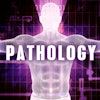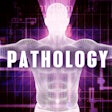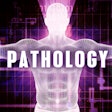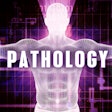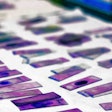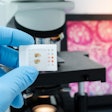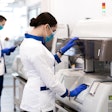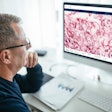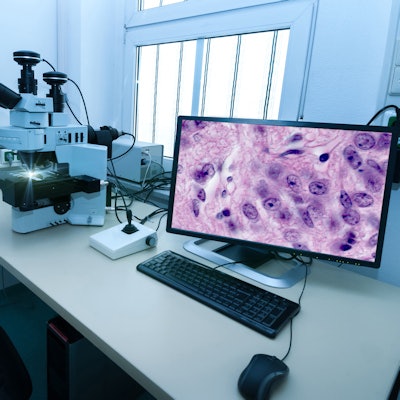
Advances in digital pathology usually are pursued by individual stakeholders, often companies with new products heading to market. But what's really needed is a systematic, collaborative approach that moves the field ahead by pursuing a regulatory science initiative.
Stepping up to the plate to fill this void is the Pathology Innovation Collaborative Community (PICC), an open forum that aims to unlock the full potential of digital pathology by accelerating the development and delivery of regulatory science-based initiatives in the precompetitive (premarket) space.
With pressure on pathology to transition to digital technology, the PICC is an initiative intended to modernize the clinical practice of pathology, with a focus on digital pathology and its enabling fields of machine learning and artificial intelligence, imaging informatics, engineering, and computational and data sciences. Ultimately, the PICC hopes to identify and develop regulatory science tools that can streamline regulatory approvals and provide insights into regulatory pathways to help innovations in the field to become clinical reality.
The U.S. Food and Drug Administration's Center for Devices and Radiological Health (CDRH) and Office of Science and Engineering Laboratories (OSEL) are participating in the collaboration, along with various hospitals and clinics, academic institutions, scientific and healthcare organizations, drug and device manufacturers, and patient advocacy groups, among others. For example, talking with patient advocacy groups helps the PICC find out what patients want, not just what pathologists want, officials said.
The idea is to provide a neutral forum for various stakeholders to contribute to the regulatory science in pathology and offer scientific input that can help guide the development of standards and regulations governing digital pathology, according to Dr. Jochen Lennerz, PhD, associate chief of pathology, medical director of the Center for Integrated Diagnostics at Massachusetts General Hospital, and the chief architect of the PICC.
"There seems to be a fundamental problem of making use of regulatory science when developing regulations," Lennerz said in an interview with LabPulse.com. "This effort is more in the realm of how to make sure that policies, regulations, and the like line up with what pathologists want. This has never been really addressed collaboratively and by a broad range of stakeholders. Pathologists need one playbook that guides them; however, currently numerous documents govern this field and it's hard to sort through these to get definitive guidance."
He indicated that to improve patient care, the best possible science should be applied as input into regulatory activities.
"The PICC is a community that strives to provide scientific input to the regulators to ultimately improve the regulatory decision-making process," he said.
The Medical Device Innovation Consortium (MDIC) is acting as the formal convener for the PICC. The purpose of the collaborative community is to bring together all stakeholders in a continuing forum of private- and public-sector members to achieve common outcomes, solve shared challenges, and leverage collective opportunities, with the goal of improving areas affecting U.S. patients and healthcare, the MDIC said in a statement.
Membership in the PICC is approaching 400.
"Our initiatives are intended to advance regulatory science and improve the safety and effectiveness of devices," explained Jon Hunt, PhD, vice president of clinical science and technology at the MDIC.
Given that it's an agency-wide initiative at the FDA to establish collaborative communities, Hunt said he proposed to Lennerz and his colleagues that they should consider establishing the collaborative, offering the MDIC as a neutral forum.
"The key deliverable, from our perspective, is a clear path to regulation of any innovation within the pathology space through the appropriate application of regulatory science. That's why it's important to have FDA buy-in and support of the collaborative community, because then you get both sides to the table to address those specific issues," Hunt added.
The FDA encourages that any content generated by the collaborative community should be made publicly available, he noted.
To accomplish its objectives, the PICC has established several workgroups that will address topics that include:
- Machine learning and AI algorithms
- Preanalytical variables
- A framework for slide scanning
- Best practices and standards for data collection
- Software tools and statistical packages
- Payor interactions and reimbursement
"For most pathologists, regulations are hurdles," said Lennerz. "Regulatory science is an academic discipline that has been forgotten. No one in an academic institution talks about using regulatory scientific approaches to innovate diagnostics. The PICC is a revitalization of this fundamentally important discipline and innovation pathway," Lennerz explained. "We want to provide input before we have regulations that do not work for the practice of pathology. The PICC gives us this opportunity.
"The FDA engages with expert networks and uses collaborative communities to obtain input from various fields. Over the last two years we worked on getting this collaborative community status. Now we established the collaborative community and thereby a formal way to engage with the FDA on a regular basis," Lennerz said. "We're trying to align clinical reality with regulatory concepts. Simply put, we're trying to provide scientific input so that the regulatory decisions make sense."
You can find more information at www.pathologyinnovationcc.org.



